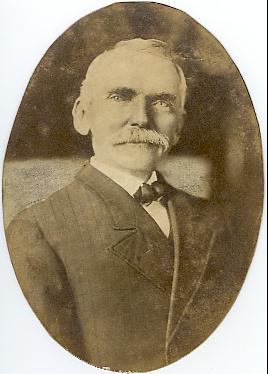John Baptist Smith facts for kids
John Baptist Smith (1843–1923) was an important person during the American Civil War. He is known for inventing a special lantern system for naval signaling in 1862. This invention helped ships communicate better, especially at night.
Contents
Early Life and War Service
John Baptist Smith was born on September 19, 1843, in Hycotee, Caswell County, North Carolina. His parents were Richard Ivy Smith and Mary Amis Goodwin Smith. When he was seventeen, he joined the Milton Blues to fight in the Civil War.
He quickly moved up in rank and was transferred to the Signal Corps. Soon, he became a sergeant in charge of a Confederate signaling station. This station was located on the James River at Newport News, Virginia. While there, he saw a famous naval battle. The Confederate ironclad ship Virginia destroyed two Union ships, the Cumberland and the Congress.
When the city of Norfolk was left by the Confederate forces, Sergeant Smith and his signal team moved to Petersburg, Virginia. They were put in charge of the signal station on the Appomattox River. Their job was to watch for enemy ships and soldiers. Even when their position was attacked, Smith and his men bravely held their ground. They also helped a lot during the "Seven Days Battles" around Richmond, and when General McClellan's army retreated.
Inventing the Lantern Signal System
In July 1862, Smith was sent to the Cape Fear River area in North Carolina. His mission was to help set up the signal service there. He was put in charge of the important station at Fort Fisher, working under Colonel William Lamb.
Smith noticed how difficult it was for ships to enter the port safely. The Cape Fear River was used by Confederate ships called "blockade runners." These ships brought important supplies to the South. Anything that could make their entry faster and safer was very helpful.
One day, while at the fort, Smith saw some ship lanterns. He thought, "What if I could use these lanterns to send signals?" He imagined adding sliding doors to a white and a red lantern. This way, he could create flashes of red and white light instead of waving torches. This new system could be used both at sea and on land.
He shared his idea with Colonel Lamb, who approved it. Then, General Whiting, who commanded the area, gave Smith permission to work with a machine shop in Wilmington. There, Smith personally oversaw the making of his new lanterns.
The General then sent Smith to Commodore Lynch. A group of naval officers studied Smith's flash-light signaling system. They were very impressed. Because of their recommendation, the system was adopted and used on all Confederate blockade runners. Each runner received a pair of Smith's lanterns and a signal officer.
Signal stations were also set up along the coast. When an incoming ship approached the coast, its signal officer could flash lights from the side of the ship facing the shore. This helped them avoid being seen by enemy ships. They could get the attention of the shore stations. This way, they could find out where their ship was and send a message to the fort's commander. The commander could then set special lights to guide the pilot across the sandbar. The fort's guns would also be ready to protect the ship if needed.
Impact and Later Service
This new way of signaling at night was very successful. It was much better than using old torches. Smith later met a British ship captain who was very impressed. The captain offered to take Smith to England to get patents for his invention in Europe. He even offered to pay all the costs. However, Smith turned down this offer. He felt it would be like leaving his country when it needed him most. He believed his system became the basis for modern naval signaling.
Because of his valuable work, Sergeant Smith was given special duty with General Whiting in Wilmington. The general let Smith choose which ship he wanted to serve on as a signal officer. Smith chose the Advance, a very fast blockade runner. He served well until February 1864.
At that time, he was promoted to lieutenant in the Signal Corps. He was ordered to report for duty in Petersburg. He was given command of the signal station on the lower James River, with his main base at Hardy's Bluff. From this important spot, he sent detailed reports about the number and movements of enemy gunboats and transport ships.
Eventually, the communication lines were cut, and he had to retreat to Petersburg. In that city, which was under attack, he and his men fought in the trenches as regular soldiers for two days without rest. Because of his known skill and bravery, Lieutenant Smith was given command of the signal lines from General P. G. T. Beauregard's headquarters. A few days later, he was ordered to report directly to General Robert E. Lee. General Lee put Smith in charge of the signal lines running from his own headquarters to different points around Petersburg. This was a very high honor for such a young officer in the Confederate Army.
After the War
In 1865, Lieutenant Smith's men were among the last to leave Petersburg. They crossed the last bridge as it was burning. They acted as a rear guard for General Lee's army. They were present at Appomattox Court House, where Smith released some Union prisoners. Smith then got special papers for his men that allowed them to go home. He returned to Caswell County on April 15, 1865, exactly four years after he first joined the army.
In 1872, he married Sabra Annie Long. They had eight children together. John Baptist Smith is buried at the Red House Presbyterian Church near where he was born in Caswell County, North Carolina. You can find more about his family at the Caswell County Family Tree.


